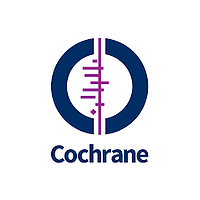BackgroundTransient tachypnea of the newborn (TTN) is characterized by tachypnea and signs of respiratory distress. Transient tachypnea typically appears within the first two hours of life in term and late preterm newborns. Supportive management might be sufficient. Non-invasive (i.e. without endotracheal intubation) respiratory support may, however, be administered to reduce respiratory distress during TTN. In addition, non-invasive respiratory support might improve clearance of lung liquid thus reducing the effort required to breathe, improving respiratory distress and potentially reducing the duration of tachypnea.ObjectivesTo assess benefits and harms of non-invasive respiratory support for the management of transient tachypnea of the newborn.Search methodsWe searched the Cochrane Central Register of Controlled Trials (CENTRAL; 2019, Issue 2), MEDLINE (1996 to 19 February 2019), Embase (1980 to 19 February 2019) and CINAHL (1982 to 19 February 2019). We applied no language restrictions. We searched clinical trial registries for ongoing studies.Selection criteriaRandomized controlled trials, quasi-randomized controlled trials and cluster trials on non-invasive respiratory support provided to infants born at 34 weeks' gestational age or more and less than three days of age with transient tachypnea of the newborn.Data collection and analysisFor each of the included trials, two review authors independently extracted data (e.g. number of participants, birth weight, gestational age, duration of oxygen therapy, need for continuous positive airway pressure [CPAP] and need for mechanical ventilation, duration of mechanical ventilation, etc.) and assessed the risk of bias (e.g. adequacy of randomization, blinding, completeness of follow-up). The primary outcomes considered in this review were need for mechanical ventilation and pneumothorax. We used the GRADE approach to assess the certainty of evidence.Main resultsWe included three trials (150 infants) comparing either CPAPto free-flow oxygen, nasal intermittent mandatory ventilation to nasal CPAP, or nasal high-frequency percussive ventilation versus nasal CPAP. Due to these different comparisons and to high clinical heterogeneity in the baseline clinical characteristics, we did not pool the three studies. The use of CPAP versus free oxygen did not improve the primary outcomes of this review: need for mechanical ventilation (risk ratio [RR] 0.30, 95% confidence interval [CI] 0.01 to 6.99; 1 study, 64 participants); and pneumothorax (not estimable, no cases occurred). Among secondary outcomes, CPAP reduced the duration of tachypnea as compared to free oxygen (mean difference [MD] -21.10 hours, 95% CI -22.92 to -19.28; 1 study, 64 participants). Nasal intermittent ventilation did not reduce the need for mechanical ventilation as compared with CPAP (RR 4.00, 95% CI 0.49 to 32.72; 1 study, 40 participants) or the incidence of pneumothorax (RR 1.00, 95% CI 0.07 to 14.90; 1 study, 40 participants); duration of tachypnea did not differ (MD 4.30, 95% CI -19.14 to 27.74; 1 study, 40 participants). In the study comparing nasal high-frequency ventilation to CPAP, no cases of mechanical ventilation of pneumothorax occurred (not estimable; 1 study, 46 participants); duration of tachypnea was reduced in the nasal high-frequency ventilation group (MD -4.53, 95% CI -5.64 to -3.42; 1 study, 46 participants). The quality of the evidence was very low due to the imprecision of the estimates and unclear risk of bias for detection bias and high risk of bias for reporting bias. Tests for heterogeneity were not applicable for any of the analyses as no studies were pooled. Two trials are ongoing.Authors' conclusionsThere is insufficient evidence to establish the benefit and harms of non-invasive respiratory support in the management of transient tachypnea of the newborn. Though two of the included trials showed a shorter duration of tachypnea, clinically relevant outcomes did not differ amongst the groups. Given the limited and low quality of the evidence available, it was impossible to determine whether noninvasive respiratory support was safe or effective for the treatment of transient tachypnea of the newborn.

Non-invasive respiratory support for the management of transient tachypnea of the newborn
Review badges
0 pre-pub reviews
0 post-pub reviews

